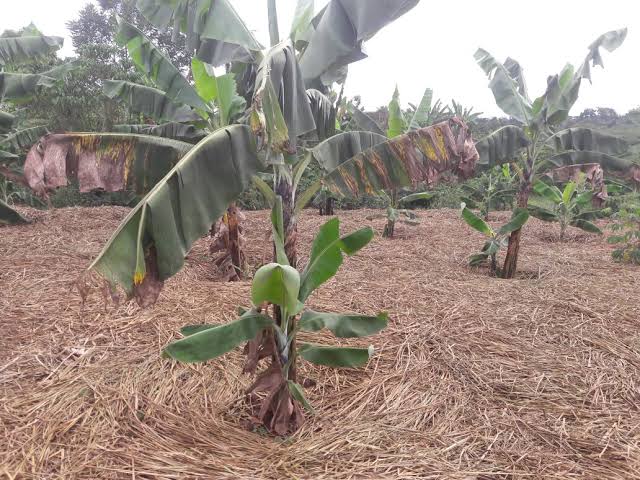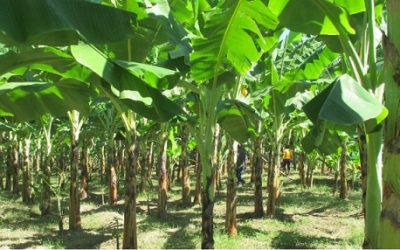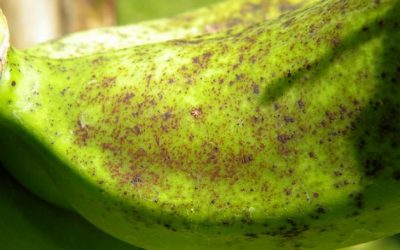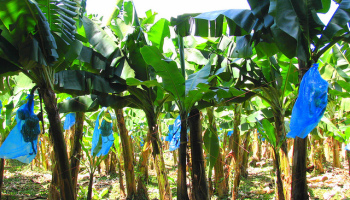
Mulch is dry, vegetative material used to cover the soil. It helps reduce evaporation and retain moisture, reduce soil erosion, suppress weed growth and provide plant nutrients as the material decomposes.
Mulch can be used in fields before and after planting, as well as around young banana plants. It is especially useful for high-valuable vegetable crops, and for growing crops in dry areas, during dry-season cropping, and in places where the soil is easily eroded by heavy rains. Where soil erosion is a problem, slowly decomposing mulch material (low nitrogen content, high C/N-ratio) will provide a long-term protection compared to quickly decomposing material.
Mulch should be applied at least 60-90 cm away from the banana stem in order to encourage banana to have more vertical roots: when mulch is applied close to banana stem, it encourages development of more superficial lateral roots, which do not held the plant firmly against wind and exposes the plants to water shortage during short dry spell.
Mulch is important because it keeps the soil underneath moist longer than bare soil.It controls soil erosion by cushioning the impact of raindrops and by slowing runoff.It suppresses weeds by shading them out and hence leads to healthy banana growth.
However, some organisms can proliferate too much in the moist and protected conditions of the mulch layer. Slugs and snails can multiply very quickly under a mulch layer. Ants or termites which may cause damage to the crops also may find ideal conditions for living. When banana residues are used for mulching, in some cases there is an increased risk of sustaining pests and diseases.
Damaging organisms such as stem borers may survive in the stalks. Plant material infected with viral or fungal diseases should not be used if there is a risk that the disease might spread to the next crop. Crop rotation is very important to overcome these problems.


